Morning report: Plus – what to expect in today’s USDA reports. (Comments are updated by 7:30 a.m. Central Time.)
Corn down 4-7 cents
Soybeans down 2-7 cents; Soymeal down $0.50/ton; Soyoil down $0.10/lb
Chicago wheat down 5-9 cents; Kansas City wheat down 2-3 cents; Minneapolis wheat down 6-9 cents
*Prices as of 6:55am CDT.
Good morning! And happy USDA reports day! USDA releases its annual Acreage Report later this morning, which will provide markets with a more accurate idea of how spring planting progress wrapped up and what potential supply implications may be in store for the 2023 crop year.
On the demand side, USDA will also release its Quarterly Grain Stocks report at the same time, which will show usage rates between March 1, 2022 and June 1, 2022. These supply readings will also change 2021/22 ending stock and 2022/23 beginning stock readings in the July 2022 World Agricultural Supply and Demand Estimates (WASDE) report, which will be released July 12.
Here are the top factors I’ll be watching in today’s report. As always, our team will be providing live coverage and analysis following the reports’ release. USDA will release both reports at 11am CDT. Check out FarmFutures.com or our social platforms (@FarmFutures) for the latest insights.
Acreage Report
Corn-soybean acreage shift – prevent plant
The most hotly anticipated item in today’s reports will be USDA’s updates to corn and soybean acreages.
USDA shocked the markets by forecasting higher soybean acres than corn for only the third time in history in the March 31 reports. But it seems the markets have accepted the new reality of higher input costs and lucrative alternative crop options to corn and soybeans. Average trade guesses continue to project higher soybean acreage planted this spring.
But the margins are expected to be much tighter than the March 31 Prospective Plantings report estimated after planting season was delayed by cool and wet weather, forcing growers in the Upper Midwest and Northern Plains to abandon planting plans that were laid out last winter. Trade estimates now peg today’s values at 89.9 million acres for corn and 90.4 million acres for soybeans.
As a result, analysts expect that the delta between soybean and corn acreage will shrink from 1.5 million acres forecast on March 31 to just shy of 0.6 million acres in today’s report. If realized, the corn acreage will be the smallest since 2018 and the soybean acres will continue to be the largest in U.S. history.
With as tight as global corn and soybean supplies are currently stretched, if USDA’s projections come in outside of the anticipated trade range today, there could be opportunities for significant price action. The smaller soybean acreage bodes bullishly for global edible oil markets, which have been stretched thin without access to Ukraine’s sunflower oil supplies and struggling palm oil flows out of Southeast Asia.
Even though larger corn acres would suggest bearish price intentions for corn futures, drought stress continues to loom heavily over the Corn Belt. A corn acreage increase would help ease some global supply concerns, but if yields can’t pull through this summer, then the bulls are likely to continue running the show.
The bigger conversation today’s report will lead to will be regarding 2023 prevent plant acreage. While we received anecdotal evidence of more prevent plant acreage this year for corn and spring wheat crops, trade guesses only suggest that around 138,000 combined acres of corn and soybeans were left fallow this spring.
A key question on everyone’s minds this spring was how much will prevent plant acres in Minnesota, North Dakota, and Wisconsin matter to overall supply totals? We will get some of those answers today, but we won’t get complete clarity until USDA’s Farm Service Agency (FSA) releases prevent plant data in August.
Spring wheat losses
Spring wheat planting faced staggering delays earlier this spring as cold soil temperatures and excessive moisture in North Dakota and Minnesota kept many growers out of the fields. Markets are already bracing for smaller spring wheat production, but again, there still isn’t a lot of good market clarity about spring wheat acres that may have been placed in prevent plant rotations.
Interestingly, the trade average for winter wheat expects USDA to increase winter wheat acres by 67,000 acres in today’s report. This may not cause significant supply shifts – especially based on how poorly winter wheat yield expectations are projecting – and it likely does not account for abandoned acreage due to drought damage.
I expect that the larger wheat trade will rely on data from the quarterly stocks report to support the majority of today’s price action following USDA’s report releases.
Quarterly Stocks Report
Wheat stocks
Market watchers are not expecting any significant changes to fourth quarter 2021/22 wheat stock readings in today’s Quarterly Grain Stocks report. In fact, the average trade guess aligns perfectly with USDA’s current 655-million-bushel reading from the June 2022 WASDE report.
That points to Q4 wheat usage rates coming in at 369 million bushels in today’s report, which is a 5% increase from the previous quarter. Much of that growth is likely to be home-grown as exports have largely stalled on high wheat prices and a strong dollar.
As a result of that dynamic, this year’s Q4 usage rate will trend a staggering 21% lower than the same time a year ago. It also looks to be the smallest Q4 usage rate as a percentage of total consumption since Q4 2020/21. A big reason for the demand drop-off is largely due to the absence of Chinese buyers in the U.S. wheat market over the past year.
In 2020/21, China bought 118 million bushels of wheat from the U.S. But in 2021/22, China only purchased 31 million bushels. No U.S. wheat shipments to China have been recorded since mid-December 2021.
I think the market is pretty well set on this estimate, so there could be some room for price action if any USDA supply revisions are outside the bounds of what the trade is expecting (i.e. if even further cuts are made to export volumes). But largely, I’m neutral to bearish in my price predictions for the wheat stocks readings.
Corn usage
Barring any changes to previous quarters’ stocks (This will happen today. USDA typically updates previous stock volumes as more accurate information from respondents is typically available after each prior report’s release. But for the sake of this hypothetical and because I haven’t had enough coffee yet, we can assume no changes.), the trade expects June 1 corn stocks to land at 4.343 billion bushels.
That means that approximately 3.507 billion bushels were consumed during March 1, 2022 to June 1, 2022. That marks a 2% annual decline in corn consumption rates for the third quarter of the 2021/22 corn marketing year. But it also trails a record-setting 2021/22 Q2 which saw over 3.791 billion bushels consumed.
A tightening global supply environment – as well as here at home – likely kept corn export paces limited this year. Peak corn export season runs from late February to late June. High prices and a surging dollar also made U.S. corn a less attractive option for global buyers this year, especially as many countries struggle to navigate the growing dynamics of global food inflation.
Growing liquidation of the U.S. cattle herd is also a bearish demand signal for corn markets. The only silver lining is that as pastures on the Plains burn up amid the ongoing drought, the cattle that remained were likely started on higher energy rations (more corn) earlier than usual in absence of adequate nutrition from pasturelands.
The sector will likely continue to rely on expanding ethanol production to carry demand prospects through the summer months. And with expanded blending limits for the summer and consumers eager to get back to pre-pandemic travel activities, there is still a lot of room for optimism for U.S. corn producers.
I’m largely neutral on price expectations from corn stocks today. I’m not sure the extra acreage will be a completely bearish omen for corn prices because condition ratings are becoming increasingly scrutinized amid dry weather. I think if we do see any price action, it’s likely to be short-lived and the markets will quickly return to trading on weather forecasts by the end of the holiday weekend.
Soybean usage
Markets are bracing for what looks to be the highest Q3 usage reading for soybeans on record in today’s Quarterly Grain Stocks report. The average trade guess for June 1, 2022 soybean supplies factors out to 965 million bushels.
That volume is likely to be over a quarter higher than the same reading a year ago thanks to a record soybean crop last fall. But that calculates out to a 966-million-bushel Q4 usage rate thanks to unseasonably high soybean export demand and expanding domestic crush production. If realized, it will likely be the largest Q3 usage reading for soybeans on record.
I think that soybeans have the most potential for bullish price activity in today’s reports based on these trade estimates. Cash soybean bids around the Midwest continue to trade at a premium over futures prices, which tells me that domestic soybean demand is stronger than this time last year.
And if USDA’s cuts to soybean acreage are larger than what the trade was anticipating, we could see a nice run-up in soybean prices today.
Corn
Corn prices traded lower in advance of USDA’s report today, with the markets likely signaling potentially bearish reactions to higher acreage expectations. Weaker energy prices and prospects for above-average rainfall for the Corn Belt during early July also contributed to corn prices falling $0.04-$0.07/bushel ahead of the opening bell.
But not everyone is expecting higher acres, so there could be some hope for higher prices today. “Given the significant [planting] delays … it is by no means certain that the corn acreage will ultimately turn out to be higher than initially expected,” Commerzbank said in a note.
Soybeans
Despite potentially bullish prospects for soybeans in today’s USDA reports, soybean prices traded $0.02-$0.06/bushel lower this morning on favorable weekend and extended weather forecasts for top soybean producing regions in the Heartland. Lower energy prices and liquidating hedge funds also contributed to the morning’s price slide.
Wheat
The dollar inched up this morning while wheat prices slid lower. Demand rates are likely to be weak in today’s USDA report, though some bullish price potential is afoot thanks to potential decreases to spring wheat acreage. Wheat futures traded $0.02-$0.09/bushel lower this morning but there could be hope for at least a partial price reversal if favorable export data is reported over the next hour.
My colleague at the Kansas Farmer, Jennifer Latzke, has been following the Kansas wheat harvest. Her latest post highlights fast-moving harvest progress thanks to favorable weather conditions. But it’s a double-edged sword as growers are also eager for rain for soybean, corn, and sorghum crops.
“Matching up with what farmers predicted in April and May, extreme drought in western Kansas really hit yields,” Latzke finds during farm visits. “Reports of 9 to 25 bushels per acre were found in the area, but anything over 20 bushels would be a stretch.”
For more, you can check out Latzke’s post on the Kansas Farmer website.
Weather
More scattered showers are likely to pop up in the Upper Plains and Upper Midwest later this evening, according to NOAA’s short-range forecasts. The showers are likely shift southeast into the Great Lakes region by Friday.
Accumulation over the next 24 hours will be light – not topping more than a half inch from Colorado and Wyoming to northern Michigan.
NOAA’s 6- to 10-day and 8- to 14-day forecasts updated yesterday are trending on the warm side for the Heartland during the first week of July. But both forecasts are showing above average chances for moisture during that time in the Corn Belt, which should help to advance crop development over the next couple weeks. However, dryness is slated to creep back into the Western U.S., which will continue to exacerbate drought conditions.
What else I’m reading this morning on our website, FarmFutures.com:
AgMarket.Net’s Jim McCormick expects the commodity price run from inflation is about to end as the Fed raises interest rates to curb inflation. That means prices will rely more heavily on supply news and traditional demand to keep bullish sentiments alive.
Advance Trading’s Larry Shonkwiler takes a look at the factors impacting 2021/22 U.S. corn exports including the Ukrainian war and Brazilian drought.
Bryce Knorr ponders the end of corn’s bullish run and what the market needs to go higher following last week’s selloff in the grain markets.
Last week, the Commerce Department found that UAN imports from Russia and Trinidad and Tobago were dumped onto the market at unfairly subsidized rates. However, the Commerce Department will not announce if duties will be placed on these imports until later this summer.
Independence Day is this weekend and cookout costs are 17% higher than last year due in large part to higher burger prices.
Morning Ag Commodity Prices – 6/30/2022
Contract
Units
High
Low
Last
Net Change
% Change
JUL ’22 CORN
$ / BSH
7.7
7.625
7.655
-0.0475
-0.62%
SEP ’22 CORN
$ / BSH
6.6475
6.57
6.58
-0.06
-0.90%
DEC ’22 CORN
$ / BSH
6.5375
6.4625
6.4675
-0.07
-1.07%
MAR ’23 CORN
$ / BSH
6.5925
6.5225
6.525
-0.0675
-1.02%
MAY ’23 CORN
$ / BSH
6.6125
6.5425
6.55
-0.06
-0.91%
JUL ’23 CORN
$ / BSH
6.58
6.51
6.5175
-0.0575
-0.87%
SEP ’23 CORN
$ / BSH
6.2025
6.1575
6.1575
-0.055
-0.89%
JUL ’22 SOYBEANS
$ / BSH
16.775
16.6325
16.7325
-0.01
-0.06%
AUG ’22 SOYBEANS
$ / BSH
15.7625
15.63
15.7
-0.015
-0.10%
SEP ’22 SOYBEANS
$ / BSH
14.985
14.87
14.8975
-0.0525
-0.35%
NOV ’22 SOYBEANS
$ / BSH
14.825
14.69
14.73
-0.0525
-0.36%
JAN ’23 SOYBEANS
$ / BSH
14.86
14.7325
14.7675
-0.0525
-0.35%
MAR ’23 SOYBEANS
$ / BSH
14.75
14.64
14.675
-0.045
-0.31%
MAY ’23 SOYBEANS
$ / BSH
14.68
14.61
14.645
-0.0375
-0.26%
JUL ’23 SOYBEANS
$ / BSH
14.6675
14.5625
14.625
-0.01
-0.07%
AUG ’23 SOYBEANS
$ / BSH
0
#N/A
14.3975
0
0.00%
JUL ’22 SOYBEAN OIL
$ / LB
72.8
71.84
72.45
-0.15
-0.21%
AUG ’22 SOYBEAN OIL
$ / LB
69.88
69
69.5
0
0.00%
JUL ’22 SOY MEAL
$ / TON
466.8
463
463
-0.2
-0.04%
AUG ’22 SOY MEAL
$ / TON
432
427.7
429.2
-0.1
-0.02%
SEP ’22 SOY MEAL
$ / TON
415
411.1
411.3
-2.3
-0.56%
OCT ’22 SOY MEAL
$ / TON
406.3
402.2
402.2
-3.5
-0.86%
DEC ’22 SOY MEAL
$ / TON
407.7
403.7
404.1
-2.9
-0.71%
JUL ’22 Chicago SRW
$ / BSH
9.1775
9.0675
9.11
-0.045
-0.49%
SEP ’22 Chicago SRW
$ / BSH
9.395
9.18
9.2125
-0.0875
-0.94%
DEC ’22 Chicago SRW
$ / BSH
9.545
9.3275
9.3725
-0.0675
-0.72%
MAR ’23 Chicago SRW
$ / BSH
9.6375
9.43
9.4725
-0.06
-0.63%
MAY ’23 Chicago SRW
$ / BSH
9.6825
9.4775
9.52
-0.05
-0.52%
JUL ’22 Kansas City HRW
$ / BSH
9.935
9.855
9.89
0.0375
0.38%
SEP ’22 Kansas City HRW
$ / BSH
10.0725
9.875
9.88
-0.0325
-0.33%
DEC ’22 Kansas City HRW
$ / BSH
10.155
9.9575
9.97
-0.0325
-0.32%
MAR ’23 Kansas City HRW
$ / BSH
10.2025
10.025
10.025
-0.0375
-0.37%
MAY ’23 Kansas City HRW
$ / BSH
10.0825
10.005
10.0425
0.0125
0.12%
JUL ’22 MLPS Spring Wheat
$ / BSH
10.205
10.11
10.14
-0.055
-0.54%
SEP ’22 MLPS Spring Wheat
$ / BSH
10.3325
10.195
10.2
-0.085
-0.83%
DEC ’22 MLPS Spring Wheat
$ / BSH
10.46
10.3225
10.3275
-0.0725
-0.70%
MAR ’23 MLPS Spring Wheat
$ / BSH
10.5725
10.46
10.4625
-0.0775
-0.74%
MAY ’23 MLPS Spring Wheat
$ / BSH
10.61
10.6075
10.61
-0.01
-0.09%
SEP ’21 ICE Dollar Index
$
105.315
104.655
105.26
0.411
0.39%
AU ’21 Light Crude
$ / BBL
110.45
108.5
108.53
-1.25
-1.14%
SE ’21 Light Crude
$ / BBL
107.76
105.83
105.86
-1.15
-1.07%
JUL ’22 ULS Diesel
$ /U GAL
4.05
3.9499
4.018
-0.0187
-0.46%
AUG ’22 ULS Diesel
$ /U GAL
4.0016
3.8743
3.9431
-0.0132
-0.33%
JUL ’22 Gasoline
$ /U GAL
3.746
3.689
3.6982
-0.1288
-3.37%
AUG ’22 Gasoline
$ /U GAL
3.6736
3.5894
3.5997
-0.1236
-3.32%
AUG ’22 Feeder Cattle
$ / CWT
0
#N/A
170.725
0
0.00%
SEP ’22 Feeder Cattle
$ / CWT
0
#N/A
173.775
0
0.00%
JU ’21 Live Cattle
$ / CWT
0
#N/A
136.8
0
0.00%
AU ’21 Live Cattle
$ / CWT
0
#N/A
132.175
0
0.00%
JUL ’22 Live Hogs
$ / CWT
0
#N/A
109.4
0
0.00%
AUG ’22 Live Hogs
$ / CWT
0
#N/A
103.575
0
0.00%
JUL ’22 Class III Milk
$ / CWT
22.77
#N/A
22.8
0
0.00%
AUG ’22 Class III Milk
$ / CWT
23.34
23.33
23.34
0.01
0.04%
SEP ’22 Class III Milk
$ / CWT
23.63
23.63
23.63
0.05
0.21%
Get our top content delivered right to your inbox. Subscribe to our morning and afternoon newsletters!





